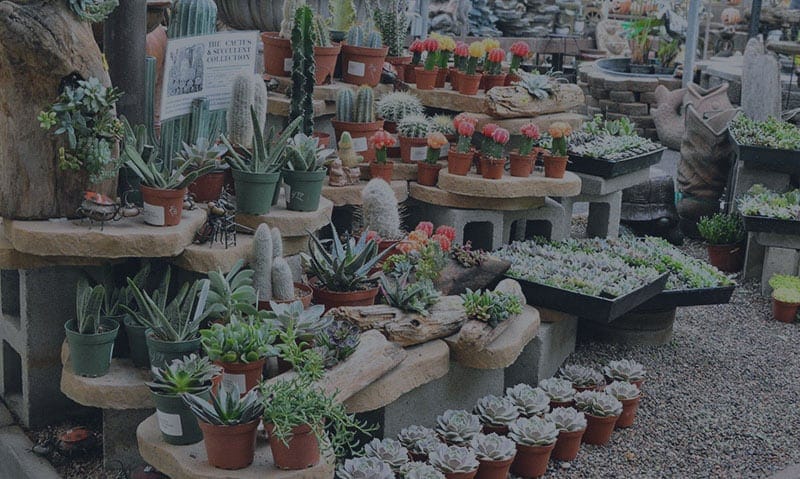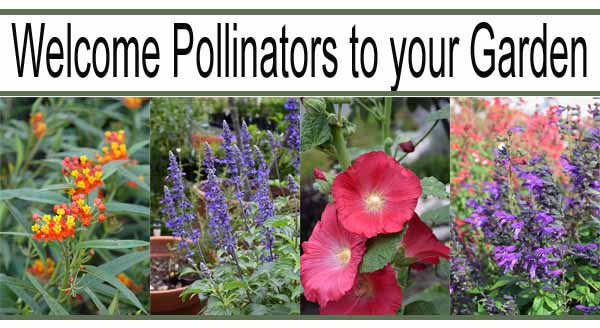Newsletter Articles
Welcome Pollinators to your Garden
Plant plants that butterflies, hummingbirds, and butterflies cannot resist. When you add new plants to your garden, select plants that will welcome these pollinators. Make your garden safe and welcoming for pollinators. Pollinators move pollen from one flower to another which helps to produce fertile seeds. Most flowers and garden plants depend on bees, butterflies, and hummingbirds for pollination. If you want to invite these pollinators to your garden, avoid using pesticides. Provide a spot in your garden that is free from wind and with a variety of flowers in colors that will attract hummingbirds, bees, and butterflies. Bees are attracted to blue, purple, and yellow flowers; hummingbirds are attracted to red-colored flowers. There are four thousand species of bees that are native to the United States and 395 species of hummingbirds. Planting flowers in clusters provides a better place for the pollinators to stop over and get to their important work. Mystic Spires Sage and Purple & Bloom Sage (Salvia ‘elvPurple & Bloom) are Salvia plants that will attract bees and other pollinators to your garden. These salvia plants produce volumes of blue-violet blooms all season. These plants provide a beautiful addition to borders or containers. These Salvia plants need modest maintenance. These are excellent choices for attracting bees, butterflies, and hummingbirds to your garden. There are approximately 750 distinct species of butterflies in the United States. If you love watching monarch butterflies fly through your garden, plant Red Butterfly Milkweed. Monarch caterpillars only eat milkweed.
Green Thumb Nursery locations in Orange County Garden Center, San Diego Garden Center located in San Marcos, Los Angeles Garden Centers located in Canoga Park or Santa Clarita the Ventura County Garden Center located in Ventura have a variety of mildewed species for you to add to your garden. In addition to red milkweed comes in a variety of colors like the Hello Yellow Milkweed and Wildfire Milkweed. All milkweed plants are low maintenance evergreen perennial plants. Milkweed will grow to be about 3 feet tall at maturity, with a spread of 12 inches. It tends to be leggy, with a typical clearance of one foot from the ground. Milkweed prefers to grow in full sun to partial shade. It is very adaptable to both dry and moist growing conditions. Do not allow milkweed plants to sit in standing water. During summer, extremely hot weather, your milkweed may require supplemental watering. Milkweed is an excellent choice for attracting hummingbirds along with butterflies to your garden. Under ideal conditions, milkweed will last in your garden for 10 years. As an evergreen perennial, milkweed plants will typically keep its form and greenery year-round. Other plants that attract butterflies include Hollyhock Alcea rosea, and the Monarch® Blue Knight Butterfly Bush. Hollyhocks have long stems and bright round flowers in bright colors. Hollyhocks are high maintenance plants that require regular care and upkeep. Hollyhocks need pruning after flowers have died. You need to be careful to avoid removing any of the new flower’s buds. Hollyhocks are an excellent choice for attracting hummingbirds to your yard. Hollyhocks grow to a height of 4 to 6 feet tall with a spread of 18 inches. Hollyhocks grow at a fast rate, and tend to be biennial, and produce flowers the second year and then the plant dies. However, Hollyhocks are self-seeding and reproduce in your garden for years. Hollyhocks require full sunlight. The Monarch® Blue Knight Butterfly Bush grows to a height of 4 feet tall at maturity, with a spread of 6 feet. This shrub requires full sunlight. It is very adaptable to both dry and moist locations. The Monarch Butterfly Bush can adapt to more gardens and landscape designs. It may require supplemental watering during periods of drought or extended heat. A few of these include Hummingbird Plant. It is a good choice for attracting butterflies and hummingbirds to your garden. The plant has bunches of long-lasting coral-red flowers from mid-summer into fall. The Hummingbird Plant is tolerant to heat, humidity, and drought. Hummingbird plants will grow to be about 24 inches tall at maturity, with a spread of 3 feet. It grows at a medium rate, and lives for approximately 20 years. It needs to grow in full sunlight. Dark Star California Lilac is a native California shrub. Dark Star California Lilac has blue star-shaped flowers along the branches from late spring to early summer. It has attractive dark green foliage. The leaves remain dark green throughout the winter. Dark Star California Lilac grows upright and has a habit of spreading. This is a minimal maintenance shrub. Pruning should take place after flowering. Dark Star California Lilac is an excellent choice for attracting bees and butterflies to your yard. Dark Star California Lilac will grow to be about 6 feet tall at maturity, with a spread of 10 feet. It grows at a medium rate, and under ideal can live for approximately 30 years. This shrub does best in full sun to partial shade, often. The sphinx moth, which is also known as the hummingbird moth, prefers white flowers that open in the evening and have a strong fragrance. Yucca is an example of a plant pollinated by moths. Yucca moth’s female yucca moths solely pollinate plants of the genus Yucca, intentionally pollinating the flowers. They collect pollen from the plant where they mate, fly to a different individual of that yucca species, deposit the pollen, and lay their eggs. With Yuccas there is a close relationship between the plants and the need for pollinators. Yuccas are dependent on species of moth to complete their life cycle. One example is Adam’s Needle. Adam’s Needle features bold spikes of creamy white bell-shaped flowers rising above the foliage from mid to late summer. ProCut® Gold Sunflower and Toto® Lemon Coneflower. Although these flowers look similar, they are from different flower families. Coneflowers or the common name Black eyed Susan and Sunflowers are both native plants that are beneficial in attracting pollinators to your garden. Sunflowers attract bees and other pollinators, including Monarch butterflies, as they migrate. Butterflies enjoy the flower’s pollen and nectar, and wild birds enjoy eating the sunflower seeds. Coneflowers attract honeybees and leafcutter bees. The Coneflower attracts hummingbirds and after the flowers have faded, songbirds arrive to eat the seeds.
One way to attract pollinators to your garden is by planting native plants. There are approximately 6,500 native plants in Southern California. The experts at the Green Thumb Nursery locations can help you select these native plants to add to your landscape. It is important to have native plants in your yard if you want to attract pollinators, because native plants have adapted to the Southern California growing seasons, climate, and soil conditions. Every garden, regardless of size, can make a significant difference to pollinators. Pollinators are important in providing a healthy ecosystem for the environment. Insects, birds, bugs, butterflies, bees, and animals pollinate fruits, vegetables, grains, nuts, and beans. Pollinators have an economic value in the production of foods.
Do you like what you see? Sign up for our weekly newsletter to get content like this every week!


